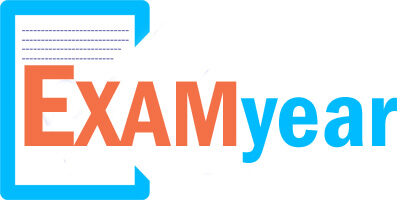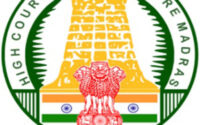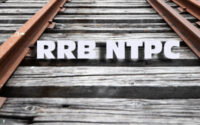New India Assurance AO Reasoning Question Papers
1. Among A, B, C, D and E, each having a different weight, D is not lighter than B and E is not heavier than A. C is not the heaviest. Who among them is the lightest?
(1) D
(2) B
(3) E
(4) Data inadequate
(5) None of these
2. Each consonant in the word BISCUIT is replaced by the next letter in the English alphabet and each vowel is replaced by the previous “letter in the English alphabet and the letters so obtained are rearranged in alphabetical order, which of the following will be the third from the left end after the rearrangement?
(1) C
(2) D
(3) H
(4) T
(5) None of these
3. If ‘+’ means ‘÷’, ‘-‘ means ‘x’, ‘+’ means‘-’ and ‘x’ means ‘+’, then –
42÷24+6×4-3=?
(1) 22
(2) 50
(3) 58
(4) 26
(5) None of these
4. In a row of forty children, Q is fourteenth from the left end and there are sixteen children between Q and M. What is M’s position from the right end of the row?
(1) 11th
(2) 10th
(3) 30th
(4) Data inadequate
(5) None of these
5. Four of the following five are alike in a certain way and so form a group. Which is the one that does not belong to that group?
(1) VT
(2) MK
(3) DB
(4) KH
(5) XV
6. How many such pairs of letters are there in the word DISCREDIT each of which has as many letters between them in the word as in the English alphabet?
(1) None
(2) One
(3) Two
(4) Three
(5) More than three
7. In a certain code DONE is written as ‘5139’ and SEAL is written as ‘8942’. How is LOAD written in that code?
(1) 2415
(2) 2145
(3) 2945
(4) 2182
(5) None of these
8. If it is possible to make only one meaningful English word with the third, the fourth, the sixth and the eighth letters of the word SINGLETON, which of the following will be the third letter of that word? If no such word can be made, give ‘X’ as the answer and if more than one such word can be made, give ‘Y’ as the answer.
(1) N
(2) O
(3) E
(4) X
(5) Y
9. Four of the following five are alike in a certain way and so form a group. Which is the one that does not belong to that group?
(1) 187
(2) 323
(3) 119
(4) 221
(5) 289
10. What should come next in the following number series?
9 8 7 6 5 4 3 2 1 1 2 3 4 5 6 7 8 9 9 8 7 6 5 4 3 2 2 3 4 5 6 7 8
(1) 8
(2) 1
(3) 9
(4) 2
(5) None of these
Directions (11- 15): In each of the questions below are given three statements followed by three conclusions numbered I, II and III. You have to take the given statements to be true even if they seem to be at variance from commonly known facts. Read all the conclusions and then decide which of the given conclusions logically follows from the given statements disregarding commonly known facts.
11. Statements:
All books are tents.
Some tents are lakes.
All lakes are ponds.
Conclusions:
I. Some ponds are books.
II. Some ponds are tents.
III. Some lakes are books.
(1) None follows
(2) Only I follows
(3) Only II follows
(4) Only III follows
(5) Only II and III follow
12. Statements:
All pictures are walls.
Some walls are rooms.
Some rooms are windows.
Conclusions:
I. Some windows are walls.
II. Some windows are pictures
III. Some rooms are walls.
(1) None follows
(2) Only I follows
(3) Only II follows
(4) Only III follows
(5) Only II and Ill follow
13. Statements:
All baskets are marbles.
Some marbles are sticks.
No stick is garden.
Conclusions:
I. Some gardens are baskets.
II. Some sticks are baskets.
III. No garden is basket.
(1) Only I follows
(2) Only III follows
(3) Only either I or III follows
(4) Only II follows
(5) None of these
14. Statements:
Some bulbs are tubes.
Some tubes are wires.
Some wires are lamps.
Conclusions:
I. Some lamps are tubes.
II. Some wires are bulbs.
III. Some lamps are bulbs.
(1) None follows
(2) Only III follows
(3) Only II follows
(4) Only I follows
(5) Only I and II follow
15. Statements:
All buildings are rivers.
All rivers are jungles.
All jungles are mountains.
Conclusions:
I. Some mountains are rivers.
II. Some jungles are buildings.
III. Some mountains are buildings.
(1) Only I and II follow
(2) Only I and III follow
(3) Only II and III follow
(4) All I, II and III follow
(5) None of these
Directions (16 – 20): In the following questions, the symbols @, ©, $, % and * are used with the following meaning as illustrated below:
‘P © Q‘ means ‘P is not smaller than Q’.
‘P % Q’ means ‘P is not greater than Q’.
‘P * Q’ means ‘P is neither smaller than nor equal to Q’.
‘P @ Q‘ means ‘P is neither greater than nor smaller than Q’.
‘P $ Q’ means ‘P is neither greater than nor equal to Q‘.
Now in each of the following questions assuming the given statements to be true, find which of the conclusions I, II and Ill given below them is/are definitely true?
16. Statements:
F % T, T @ J, J * W
Conclusions:
I. J @ F
II. J * F
III. W $ T
(1) Only l is true
(2) Only II is true
(3) Only III is true
(4) Only either I or II is true
(5) Only either I or II and III are true
17. Statements:
R*D, D©K, K$M
Conclusions:
I. M * R
II. K $ R
III. D * M
(1) None is true
(2) Only I is true
(3) Only II is true
(4) Only III is true
(5) Only II and III are true
18. Statements:
Z © F, F $ M, M % K
Conclusions:
I. K * F
II. Z * M
III. K * Z
(1) Only I is true
(2) Only II is true
(3) Only III is true
(4) Only II and III are true
(5) None of these
19. Statements:
H @ B, B © R, A $ R
Conclusions:
I. B * A
II. R % H
III. A $ H
(1) Only I and II are true
(2) Only I and III are true
(3) Only II and III are true
(4) All I, II and III are true
(5) None of these
20. Statements:
M $ J, J * T, K © T
Conclusions:
I. K * J
II. M $ T
III. M $ K
(1) None is true
(2) Only I is true
(3) Only II is true
(4) Only III is true
(5) Only II and III are true
Directions (21- 25): Study the following arrangement carefully and answer the questions given below:
M 5 1 % D R # J * F E N 3 A @ H I © W B P U 8 $ 7 2 Q V 4
21. Four of the following five are alike in a certain way based on their positions in the above arrangement and so form a group. Which is the one that does not belong to that group?
(1) % R 5
(2) F N *
(3) I W H
(4) U $ P
(5) 2 V 7
22. How many such symbols) are there in the above arrangement, each of which is immediately preceded by a number and immediately followed by a letter?
(1) None
(2) One
(3) Two
(4) Three
(5) More than three
23. Which of the following is the sixth to the right of the thirteenth from the left end of the above arrangement?
(1) #
(2) 8
(3) W
(4) E
(5) None of these
24. Which of the following is the fifth to the left of the eighteenth from the left end of the above arrangement?
(1) N
(2) A
(3) I
(4) H
(5) None of these
25. How many such numbers are there in the above arrangement, each of which is immediately preceded by a consonant and immediately followed by a vowel?
(1) None
(2) One
(3) Two
(4) Three
(5) Four
Directions (26 – 30): In each question below is given a group of letters followed by four combinations of digits/symbols numbered (1), (2), (3) and (4). You have to find out which of the combinations correctly represents the group of letters based on the following conditions and the sub-conditions and mark the number of that combination on as your answer. If none of four combinations correctly represents the group of letters, mark (5) i.e. ‘None of these‘ as your answer.
Letter: A M P R D H J T W E I K N F U
Digit: 3 % 4 9 1 @ 2 5 © 6 * 7 8 $ ȣ
Conditions:
(i) If the first letter is a consonant and the last letter is a vowel, their codes are to be interchanged.
(ii) If both the first as well as last letters are consonants, both are to be coded as the code for the last letter.
(iii) If the first letter is a vowel and the last letter is a consonant, both are to be coded as ‘#’.
26. APIWKN
(1) 34*©73
(2) #4*©7#
(3) 84*©78
(4) 84*©73
(5) None of these
27. HPEIUM
(1) @46*ȣ%
(2) %46*ȣ@
(3) @46*ȣ@
(4) #46*ȣ#
(5) None of these
28. RDEMKH
(1) @16%79
(2) 916%@7@
(3) @16%7@
(4) 916%79
(5) None of these
29. FWHRKE
(1) 6©@976
(2) 6$©@97
(3) 6©@97$
(4) $©@976
(5) None of these
30. IDAPRU
(1) *13495
(2) 8*1349
(3) ȣ1349*
(4) ȣ13495
(5) None of these
Directions (31- 35): Study the following information carefully and answer the questions given below:
B, D, M, K, P, Q, W and H are sitting around a circle facing at the centre. M is to the immediate right of B who is fourth to the right of K. P is second to the left of B and is fourth to the right of W. Q is second to the right of D who is second to the right of H.
31. Who is third to the right of B?
(1) W
(2) M
(3) K
(4) H
(5) None of these
32. Which of the following represents the immediate neighbours of D?
(1) PQ
(2) KH
(3) PH
(4) KQ
(5) PK
33. Who is third to the right of W?
(1) P
(2) D
(3) K
(4) R
(5) Data inadequate
34. Who is second to the left of P?
(1) D
(2) H
(3) K
(4) Data inadequate
(5) None of these
35. Who is to the immediate left of B?
(1) Q
(2) P
(3) W
(4) Data inadequate
(5) None of these



